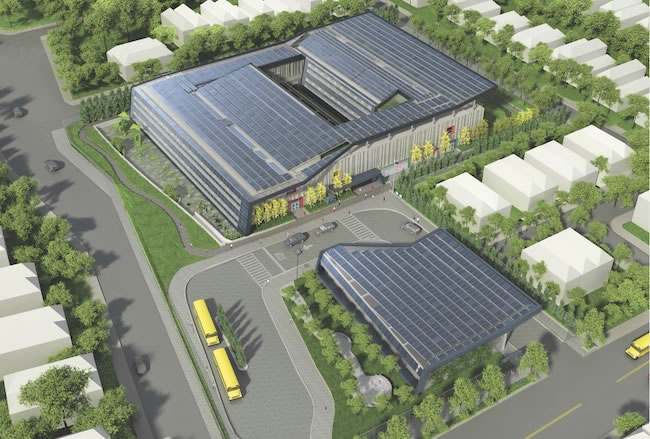Approximately 5.7 million people live in “The Old Line State.” According to the Maryland Department of Planning, by the year 2040, that number will swell by nearly 20 percent to 6.8 million.
To accommodate a million new residents, Maryland will need not just new communities—places for its burgeoning population to live, work, and play—but also smarter, more sustainable development that can support its new denizens without shortchanging the environment on which it relies. For that reason, suburbs are out and smart-growth, transit-connected cities are in, according to Mitch Weber, president of Heffner & Weber, a full-service real estate development, design-build, and property management firm located adjacent to Baltimore-Washington International Airport (BWI) in Linthicum Heights, Maryland.
“You read about it in every newspaper, magazine, and social media outlet around the world: People don’t want to live in the suburbs anymore,” Weber says. “The tide has changed. People want to live where they work. They want to get rid of their cars. They want to be sustainable. It’s become part of our culture—and it’s only going to become more so as our population grows.”
Although people of all ages are flocking in record numbers to traditional downtown urban cores, the re-urbanization of America demands that developers also build new transit-connected town centers. In Baltimore and metropolitan areas like it, the best place for such town centers may be at the airport, argue Weber and his longtime business partner Sam Heffner. In 2007, they announced plans to design, develop, and build an “Aerotropolis” immediately adjacent to BWI.

BWI Aerotropolis will be only 35 minutes away from Washington, DC.
“‘Aerotropolis’ is a term coined by Dr. John Kasarda at the University of North Carolina’s Kenan-Flagler Business School,” Weber says. “It’s the concept of taking a city airport and turning it into an airport city … so that the airport becomes more than just a place to fly out of. It’s an airport-centric city where people can live, work, and play—with the airport as the hub.”
Worldwide, places as diverse as Amsterdam, Frankfurt, and Hong Kong already have thriving airport cities. BWI Aerotropolis’s proximity to Washington, DC, New York, and virtually every available mode of transportation, however, sets it apart from its international brethren.
“We happen to be sitting on property … that has unique quadramodal attributes and has recently been re-zoned to allow for multifamily residential, in addition to traditional commercial office, hotel, retail, and entertainment uses,” Weber says. “There’s the airport, of course, but there’s also BWI Marshall Rail Station five minutes away and connected to the property by pedestrian bridge, and the bustling Port of Baltimore only 15 minutes away. Coupled with the fact that we have an existing, very highly developed road system, we’re sitting on a unique live-work-play property that’s extremely accessible from all four modes of transportation: land, air, rail, and sea.”
Aerotropolis North, the first of two phases, is close to completion. There, Heffner & Weber has already designed, developed, or built nearly 3.5 million square feet on approximately 250 acres immediately north of the BWI access road. Additionally, it owns approximately 50 acres of undeveloped land, 30 of which will be occupied by a mixed-use development that includes 614 luxury apartment units.
At Aerotropolis South, which the company envisions as the “Airport City” of a greater airport-centered development, Heffner & Weber owns approximately 130 acres of undeveloped land, 30 of which it plans to sell to a national multifamily developer for construction of 370 condos and townhouses. Plans are still in their infancy, but within 20 years, Weber envisions more than 700 acres of airport-adjacent land teeming with mid-rise condos, apartment buildings, hotels, office towers, and all the high-density amenities of a world-class metropolis, from health clubs to art galleries.
Because it’s also adjacent to 50 acres of wooded forest conservation and flood plain, and just 10 minutes from Maryland’s 16,000-acre Patapsco Valley State Park, residents of BWI Aerotropolis will enjoy a unique mix of urban and natural sustainability.
“Having an urbanish live-work-play environment that’s hip, green, transit-connected, and within 35 minutes of Washington, DC, is a beautiful thing,” Weber says. “As it continues to proliferate, the BWI Aerotropolis is going to become a nationally and internationally recognized destination.”

